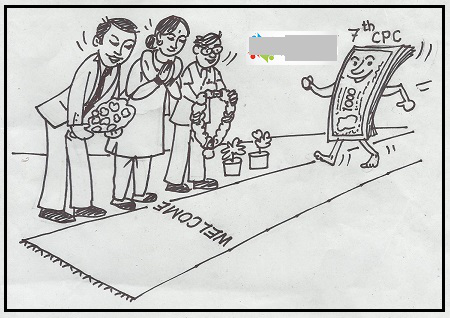Microfinance Sector to Grow Strongly at 24% Annually over FY15-FY19
Feb 02, 2015 | 12:18 PM IST
Feb 02, 2015 | 12:18 PM IST

The microfinance sector has made a strong come back after the Andhra Pradesh crisis and is poised to grow at a CAGR of 24% over FY15-FY19, says India Ratings & Research (Ind-Ra). The sector may not witness the over 100% growth prevalent before FY11, but can grow faster than banks and most other non-banking financial companies (NBFCs).
After consolidating in FY12-FY14, the growth is projected to be stable with margin caps, transparency on rates, benign recovery means, self-regulation by self-regulatory bodies such as Microfinance Institutions Network (MFIN) and Sa-Dhan, and credit checks of borrowers with credit information bureaus (Equifax and Highmark) in line with the Reserve Bank of Indias (RBI) guidelines issued in FY12. The sector could require an equity infusion of INR27bn to achieve the expected growth. The MFIs also require to evolve their models to provide range of services to their clients to remain competitive and continue growth.
Ind-Ra estimates the total NBFC-microfinance institutions (MFI) loan portfolio will increase to INR748bn by FY19 from INR253bn in FY14 by doubling its borrower base and increasing disbursements. MFIs have expanded in Uttar Pradesh, Maharashtra, Madhya Pradesh and Bihar while continuing to grow in their traditional strongholds of Tamil Nadu, Karnataka and West Bengal. However, MFIs need to be careful of the portfolio quality as the newer states have exhibited higher non-performing assets in self-help group-bank linkage programme (the largest government-sponsored microfinance programme in the world). Though MFIs advantages of door-step delivery, simple documentation and short turn-around time are likely to be retained, they may have to be watchful of the competing models as they develop. MFIs may also require to compete with some of these models on interest rates. The competing models could provide loans at interest rates of 12%-18% p.a. while MFIs provide loans at 23%-26% p.a.
Ind-Ras research shows that in some of the largest and oldest microfinance markets in Asia and South & Central America, MFIs have evolved into providers of a range of financial services such as credit, savings and deposits, insurance, mutual funds, remittances and pension products. To facilitate the evolution of MFIs and further the goal of financial inclusion, RBI has permitted MFIs to act as business correspondents (BCs) and invited applications for diversified banks. The competition from various private and public models of delivering financial services may force MFIs to provide a range of services to retain their clients.
As the Indian microfinance system evolves through additional banking licenses, diversified banks, BC model and Jan dhan-driven bank credit, these models can pose significant competition to the existing MFIs once they achieve traction in the next four to five years. MFIs could face limited regulatory risk in the form of the pending passage of the MFI bill. The newer models of microfinance also provide the existing MFIs an opportunity to evolve and provide diversified financial services to their clients.
The conversion to small bank can provide an MFI access to low-cost funds (savings) and reduce costs which could translate to lower interest rates on micro-loans. The BC model requires less capital but high penetration in the market. Our research indicates that large MFIs (loan portfolio>INR5bn) with operations in many states can apply to convert into small banks while mid-sized (loan portfolio<INR5bn and >INR1bn) and small MFIs (loan portfolio<INR1bn) can either convert to a small bank or adopt a model with combined operations of BC and an MFI (in case it is difficult for them to raise capital). In Ind-Ras opinion, the top 15 NBFC-MFIs (constituting about 80% of NBFC-MFI loan book in 2QFY15; the larger ones may be considered systemically important) seem better placed to benefit from the small bank licenses.
As more small borrowers are linked to micro-credit through BC model and differentiated banking, the systemic risk of the sector could decline. Evolving MFIs can thus provide a range of financial services and aspire for high growth on the back of the latent demand for micro-credit and their strengths. They can also remain competitive with emerging models of microfinance.















